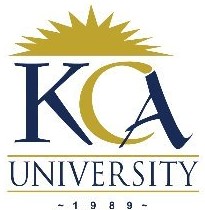
UNIVERSITY EXAMINATIONS: 2020/2021
EXAMINATION FOR THE DEGREES OF BACHELOR OF SCIENCE IN
INFORMATION TECHNOLOGY / BACHELOR OF SCEIENCE IN
INFORMATION SECURITY FORENSICS
BIT 3107/ BISF 2306: WIRELESS NETWORKS TECHNOLOGIES
FULLTIME/ PART TIME/DISTANCE LEARNING
DATE: DECEMBER, 2021 TIME: 2 HOURS
INSTRUCTIONS: QUESTION ONE IS COMPULSORY, CHOOSE TWO OTHER
QUESTIONS
QUESTION ONE (20 Marks) Compulsory
a) Describe the following terminologies in relation to satellite communications [10 Marks]
i. Earth stations
ii. Uplink
iii. Downlink
iv. Transponder
v. Elevation angle
b) Describe the basic concept of spread spectrum and three benefits arising from use of
spread spectrum [3 Marks]
c) Describe any four categories of noise [4 Marks]
d) Identify three significant strengths that wireless communication systems have over the
wired communication systems [3 Marks]
QUESTION TWO (15 Marks)
a) Describe the following three types of antennas, describe or sketch their radiation patterns
and indicate areas of application [6 Marks]
a. Half-wave dipole
b. Quarter-wave dipole
c. Parabolic
b) Describe in detail the following 2 standards [4 Marks]
i. IEEE 802.11b standard
ii. IEEE 802.11a standard
c) What determines how successful a receiver will be interpreting an incoming signal?
Briefly explain [5 Marks]
QUESTION THREE (15 Marks)
a) Describe briefly the Bluetooth technology [3 Marks]
b) State any five prevalent applications of Bluetooth [5 Marks]
c) What makes it difficult to jam signals transmitted in a spread spectrum technique?
[3 Marks]
d) Describe the error detection process [4 Marks]
QUESTION FOUR (15 Marks)
a) Multiple access is a phrase commonly used with communication systems
i. Define the term Multiple Access [2 Marks]
ii. Identify the key differences between the following types of multiple access:
FDMA, TDMA, CDMA [6 Marks]
b) Describe the 3 major radio propagation mechanisms [7 Marks]
